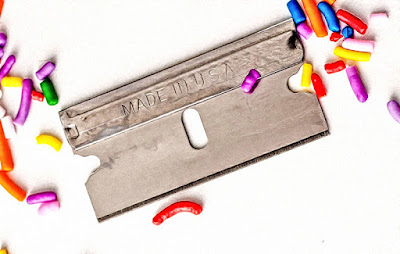Almost half of all couples divorcing have a child under the age of 16 years. Parental separation results in a major upheaval in the life of a child. Apart from the loss created by the absence of one parent, there are usually major changes in living conditions, home, neighbourhood and school. Added to this are the psychological hazards of insecurity, loss of trust, anxiety, guilt and fear.
Emotional and behavioural problems in children have been found to occur more often when the separation has been hostile and accompanied by much unpleasantness. A little sensitivity, a great deal of love and understanding and reassurance goes a long way in preventing emotional and behavioural disorders in the child.
An older child or adolescent tends to respond with greater anger and may become oppositional or withdrawn. He may feel that his parents have failed to look after him, and start relying more on himself; and may retaliate by being more self-centred, independent and deliberately hurtful.
Psychological impact of divorce on the child
The psychological impact of divorce on the child is a complex issue. Several factors such as the manner in which the parents separated; the age and maturity of the child, socio-economic factors and support of family members determine the effect of the separation on the child.Emotional and behavioural problems in children have been found to occur more often when the separation has been hostile and accompanied by much unpleasantness. A little sensitivity, a great deal of love and understanding and reassurance goes a long way in preventing emotional and behavioural disorders in the child.
Child’s Emotional Experience
Irrespective of their age, the child may feel- A sense of loss.
- Sudden unwelcome changes in his life – change of school, neighbourhood and friends.
- Fearful (Who will look after me? What will happen if my mom leaves me?)
- Angry – at one or both parents for failing to look after him.
- Guilt and confusion – (Has this happened because of me? Am I responsible in some way?)
- Insecure and rejected – their world has fallen apart.
- Torn between feelings for both parents
Developmental Stage Reactions
A young child (less than 8-9 years) is more dependent on the parents for love, protection and security, and is likely to respond with more fearfulness and anxiety. There is also a greater tendency towards wishful thinking and hoping that the parents get back together. He/she may become more ‘clingy’ and dependent; and may have nightmares, stomach-aches, or may regress to bed-wetting. Attention-seeking behaviours may be aimed at getting the parents back may result in childish behaviours and tantrums. It is important to reassure the child, and establish a predictable routine to give him a sense of security and stability.An older child or adolescent tends to respond with greater anger and may become oppositional or withdrawn. He may feel that his parents have failed to look after him, and start relying more on himself; and may retaliate by being more self-centred, independent and deliberately hurtful.
‘They don’t care about me, why should I care about them’It may help to talk things over with an adolescent, and channelize his need for independence by giving him some responsibilities.
Strategies to Help Your Child
DOs
- Be open. The child has the right to know what is going on and what to expect. It should be explained in simple terms why the parents are separating and who he he/she is going to stay with (without giving specific unpleasant details) and he/she should be given age appropriate answers to any questions they may have.
- Reassure the child that he/she will always be loved and looked after by both parents.
- Protect the child from the unpleasantness, conflicts and arguments which may arise between you and your spouse.
- Take responsibility for the situation, and be careful not to blame the child.
- Make as few changes as possible to the child’s daily routine and caregiving, though some changes are inevitable.
- Get help from family members, friends and teachers. Social support gives a sense of security and belonging to your child and is equally important for you.
DON’Ts
- Don’t pull your child into the conflict – do not use him as a weapon, messenger or spy. It only serves to build up resentment in the child.
- Don’t ask your child to take sides.
- Don’t criticise, abuse or argue with your ex in front of your child.
- Don’t share your anger and frustration about your spouse with your child. If you need to vent your feelings, do it with a friend, family member or counsellor.
- Don’t discuss mutual pending matters (e.g financial or legal issues) with your child.
Ref:
- https://www.justice.gc.ca/eng/rp-pr/fl-lf/divorce/wd98_2-dt98_2/wd98_2.pdf
- https://link.springer.com/chapter/10.1007/978-1-4613-9811-0_7
- https://www.rcpsych.ac.uk/mental-health/parents-and-young-people/information-for-parents-and-carers/divorce-or-separation-of-parents---the-impact-on-children-and-adolescents-for-parents-and-carers

